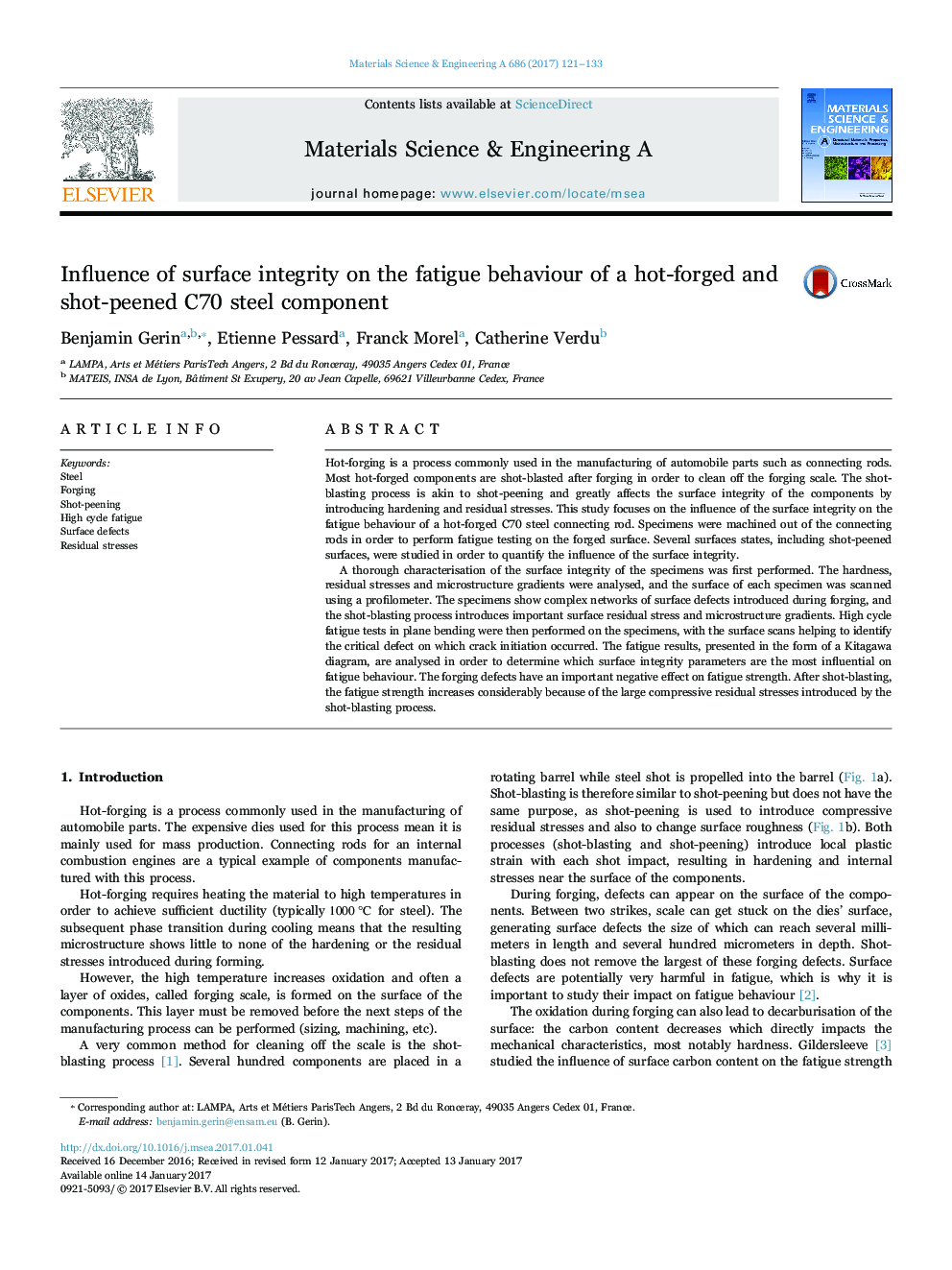| Article ID | Journal | Published Year | Pages | File Type |
|---|---|---|---|---|
| 5456726 | Materials Science and Engineering: A | 2017 | 13 Pages |
Abstract
A thorough characterisation of the surface integrity of the specimens was first performed. The hardness, residual stresses and microstructure gradients were analysed, and the surface of each specimen was scanned using a profilometer. The specimens show complex networks of surface defects introduced during forging, and the shot-blasting process introduces important surface residual stress and microstructure gradients. High cycle fatigue tests in plane bending were then performed on the specimens, with the surface scans helping to identify the critical defect on which crack initiation occurred. The fatigue results, presented in the form of a Kitagawa diagram, are analysed in order to determine which surface integrity parameters are the most influential on fatigue behaviour. The forging defects have an important negative effect on fatigue strength. After shot-blasting, the fatigue strength increases considerably because of the large compressive residual stresses introduced by the shot-blasting process.
Related Topics
Physical Sciences and Engineering
Materials Science
Materials Science (General)
Authors
Benjamin Gerin, Etienne Pessard, Franck Morel, Catherine Verdu,
